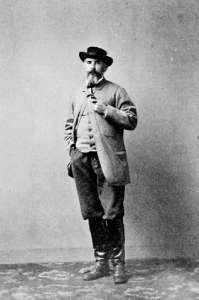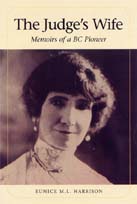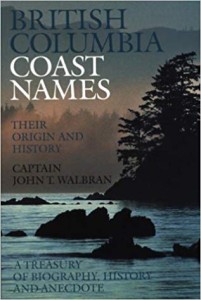Ronsdale Authors’ Inspiration Series: Marie Elliott
Welcome to a new blog series at Ronsdale Press! We’ve asked some of our authors what books have most inspired them, and therefore their own work, over time. First up is Marie Elliott.
Marie Elliott is the author of Ronsdale publication, ‘Gold in British Columbia’. She has also written numerous articles and is author of two definitive books about British Columbia’s interior: ‘Gold and Grand Dreams’ (2000) and ‘Fort St. James and New Caledonia: Where British Columbia Began’ (2009). Her great-great-grandfather, William Collinson, took part in the Cariboo Gold Rush.
Below, Elliott discusses the three books she cites as being her greatest literary inspiration…
The first of my inspirations is The Man for a New Country by Sir Matthew Baillie Begbie by David R. Williams.
How do you manage law and order in the face of an onslaught of 2,000 gold miners
eager to find instant wealth? How will an equal number of Aboriginal people keep their homes and livelihood when these prospectors move into their territory? How do you adapt British laws to a new Colony?
David R. William’s biography of Sir Matthew Baillie Begbie sets down in great detail how the Judge accomplished his tasks. We learn that Begbie had a keen intelligence, raw courage to face the unknown and compassion for both Aboriginals and white settlers. For example, his efforts to introduce a law that would provide income for abandoned wives and children is not well known.
The author, David Williams, was a lawyer, appointed Queen’s Counsel in 1969. His fine analyses of Begbie’s decisions in the province’s most complicated legal cases make the book an outstanding historical reference as well as an enjoyable read.
Next on my list is The Judge’s Wife: Memoirs of a British Columbia Pioneer by Eunice M.L. Harrison.
How many of us take the time to maintain diaries these days? While keeping up with modern technology in the twentieth century, it is reassuring to take an hour or two from a hectic day and read a few chapters of The Judge’s Wife. Eunice Harrison’s memoirs take us back in time to the end of the 19th century when life moved at a slower pace. For over half a century she recorded her activities in multiple notebooks, and at the age of 85, with the help of her youngest son, Herschel, she recreated her life story using the notebooks for reference.
Eunice was born into the adventurous Seabrook family in Ontario. Her father came west to visit the gold fields and returned to bring his young family out to British Columbia. In 1880 Eunice married Eli Harrison Jr., whose family was from England. After Harrison was called to the British Columbia Bar in 1884, he took over some of the court circuit duties in the Interior that Matthew Baillie Begbie had covered. Begbie attended the same Victoria church as the Harrisons, St. John the Divine, and was a welcome visitor at their home.
With a decent upper middle-class income, Eunice maintained all the niceties of society, while raising six children with the help of servants. She spent most of her life in Victoria but had enjoyed visits to Vancouver as a teenager. She later accompanied her husband on a circuit in the Cariboo.
In order to cope with a bout of arthritis, Eunice went to San Francisco in 1906 with her two youngest children. They were staying in the St. Nicholas Hotel when a mighty earthquake destroyed the city. The ingenuity used by the family to make their way out of the hotel and down through mangled crowds to a waiting passenger ship forms the climax of Eunice’s life story.
The book is produced by Ronsdale Press with great care and attention, including sensitive editing by Ronald Hatch, a fine introduction by Jean Barman, and a detailed set of Notes compiled by Louise Wilson, Eunice’s granddaughter. It should be an inspiration to any readers who have said to themselves, “Oh, I must write that down before I forget. Time is passing by so quickly!”
Buy The Judge’s Wife: Memoirs of a British Columbia Pioneer: https://ronsdalepress.com/books/the-judges-wife/
Last on my list of greatest literary inspirations is British Columbia Coast Names: Their Origin and History by Captain John T. Walbran.
This is a very special book for me, for two reasons. The author, Captain Walbran, was a personal friend of my great, great grandfather, William Collinson, a pioneer settler and postmaster who lived at the head of the wharf at Miners Bay, Mayne Island. Both men were from Yorkshire, and over a period of ten years, whenever Walbran brought the lighthouse tender, Quadra, to service the Georgina Point lighthouse at Mayne, he took time to visit with my great, great, grandfather and learn more about the history of the area. The information he obtained appears in the book’s entries for the Gulf Islands.
Walbran continued to gather stories at stops up and down the British Columbia coast until his retirement. In port he spent his spare time researching at libraries and archives to enlarge and verify his data. He was an excellent photographer and sent his hosts images at Christmas which are treasured by many coastal families.
British Columbia Coast Names sold out immediately when it was published in 1909. It was first reprinted by the Vancouver Public Library in 1971, and my copy shows two more reprintings in 1971 and 1973. It is a book that belongs on everyone’s reference shelf.
We hope you enjoyed seeing some of the inspiration behind an author’s work! We will continue to share those of Ronsdale-published authors.
Buy ‘Gold in British Columbia’ here: http://ronsdalepress.com/books/gold-in-british-columbia/
‘Gold in British Columbia’ Description:
The Fraser River and Cariboo gold rushes were defining moments, not only in the history of British Columbia, but also Canada. With the influx of over 25,000 European and Chinese miners to the Fraser River in the spring of 1858, all of them hungry for gold, the British government was compelled to declare the mainland, known then as New Caledonia, the Colony of British Columbia. Thirteen years later the colony would join Confederation, assuring that the country would reach from sea to sea. In an attempt to capture the excitement of this period and the challenges faced by the colonial government during the years prior to Confederation, Gold in British Columbia seeks to answer three vital questions: How did the two gold rushes unfold? Who were the participants? And what were the outcomes? Excerpts from the correspondence of government officials and from Matthew Baillie Begbie, the only Supreme Court judge in the Colony of British Columbia for most of that period, provide insight, humour and new perspectives on the actual gold rush events and the enormous task of establishing law and order during one of the major social upheavals of North America. In this history, readers will meet the miners, First Nations peoples, Hudson’s Bay Company personnel, governors, Royal Engineers, assistant gold commissioners, steadfast community leaders, and brave women who trekked over the mountains — a kaleidoscope of colourful people and events.






